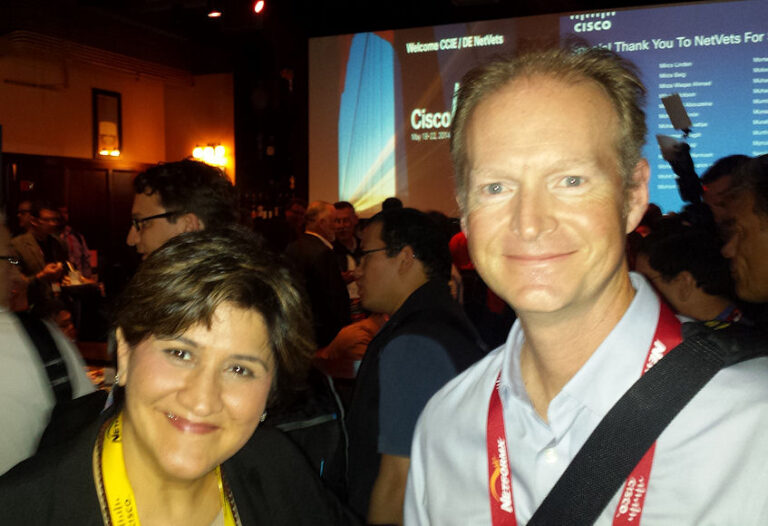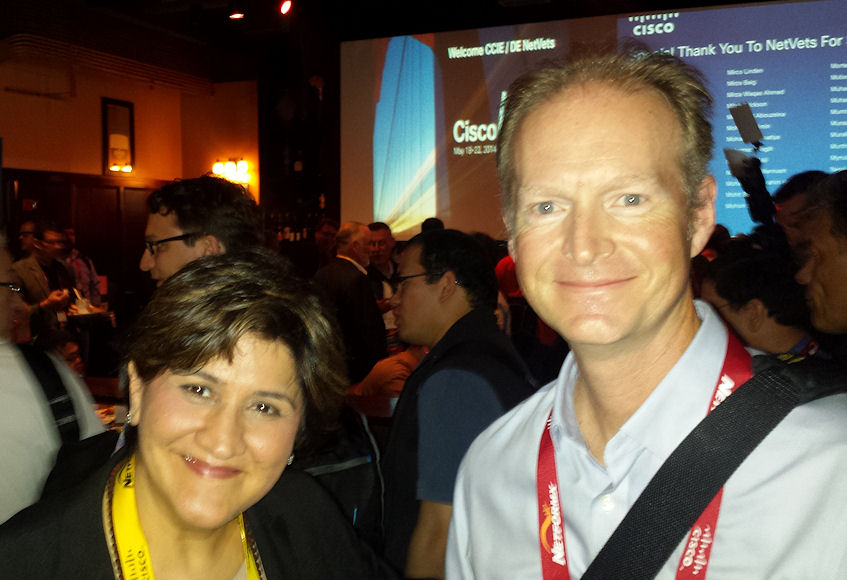This past week (May 19-22) Cisco hosted 25,000 networkers at their 25th annual Cisco Live conference in San Francisco. Besides the hospitality that Cisco provides its guests, most attendees come for the opportunity to learn and interact with peers. While the Customer Appreciation Event (Lenny Kravitz and Imagine Dragon’s concert at AT&T Ballpark) was amazing, the attendees really come to Cisco Live for the technical knowledge they gain from the breakout sessions.
Every year, Cisco provides technical details about their latest product announcements. In the past 10 months, Cisco has made a lot of announcements regarding their acquisition of Insieme Networks, the Nexus 9000 switches, and Application Centric Infrastructure (ACI). Last year, Cisco revealed information about Insieme Networks being a “spin-in” company and how their technology could help expand their data center networking Nexus product line. Since early November, Cisco has been slowly revealing details about ACI and how it can be used to create policy that drives configuration of the data center networking infrastructure. The industry has been craving more information about how these technologies can be used and how they can be deployed.
At this year’s Cisco Live there was a DevNet Zone that had sessions catering to those interested in network programmability. There were sessions and information provided on OpenDaylight, the NeXt JavaScript UI Framework, Software Defined Networking (SDN), Network Function Virtualization (NfV), OpenStack, Internet of Things (IoT), UCS automation and scripting, and, of course, Application Centric Infrastructure (ACI) and the Application Policy Infrastructure Controller (APIC). There were also many breakout sessions that were dedicated to ACI and APIC.
Editor’s Note: Visit Cisco Live for an on-demand library of sessions from the conference.
On Wednesday morning there was a keynote session (GENSK-1109) titled “Technology Trends Keynote: Fast Track to Fast IT: Cisco’s Application Centric Infrastructure.” The presentations were given by Soni Jiandani, Senior VP of the Insieme Networks; Scott Clark, VP of Cisco Advanced Services; and Rob Soderbery, Senior VP and GM of the Cisco Enterprise Networking Group. This session reviewed how ACI can help organizations move to a “Fast IT” position to help them accelerate their business. This session also included case studies by ACI customers sharing with the audience their experiences. During the CCIE/NetVet lunch with John Chambers, I was honored to spend 15 minutes taking with Soni Jiandani about ACI.
There was a session (ATE-CL345) titled “Application Centric Infrastructure (ACI) Software Development Lifecycle (SDLC)” presented by Nathan Sowatskey and Akshat Sharma, Network Programming Technical Marketing Engineers. This session covered how a network developer could use Cisco’s Virtual Internet Routing Laboratory (VIRL) – now named Cisco Modeling Laboratory (CML) – to start to code ACI integrations and perform testing during development.
On Monday I also attended a session (BRKACI-1025) titled “Migration from Classic Design to ACI” taught by Kannan Ponnuswamy, Solutions Architect, Cisco Advanced Services. His presentation covered several methods of migrating to ACI: Classic Mode (used for natural growth and refresh cycles), ACI Integration (used for new environments), and ACI Migration (for organizations aiming to take full advantage of ACI). His presentation also covered the network centric approach, the application-centric approach, and the hybrid approach (combining these two approaches).
On Monday morning I attended a session (BRKACI-2001) titled “Integration and Interoperation of existing Nexus networks into an ACI architecture” that was taught by Mike Herbert, Principal Engineer, Insieme Networks Business Unit (INSBU). His session covered why ACI can simplify a network’s configuration and, therefore, its ability to support applications. His presentation covered the concepts driving ACI and how it interacts with Virtual eXtensible LAN (VXLAN).
On Wednesday morning I attended a session (BRKCDN-2971) “Introduction to ACI Programming and APIs” taught by Mike Cohen, Director of Product Management. His presentation covered in-depth examples of how you can access ACI through programming interfaces, the ACI APIs, the Python SDK, the REST API, JSON or XML, and, of course, the APIC GUI. His presentation gave great examples of scripting and then covered the OpFlex framework.
On Thursday afternoon I attended a session (BRKCDN-2967) titled “APIC Enterprise Module REST API” taught by Adam Radford, CSA, Cisco. This talk went into great detail on how you can easily and quickly use Postman (a REST API client for the Chrome browser) to script configuration of an ACI environment. He also covered how Postman can be used to learn the ACI API.
There was also a session (BRKACI-2006) titled “Integration of Hypervisors & L4-7 Services with ACI” taught by Bradley Wong, Principal Engineer, INSBU and Maurizio Portolani, Distinguished TME, INSBU. This session went over an introduction to ACI and the policy model. Then this presentation covered how ACI integrates with various hypervisors and allows for NfV integration using service chaining and the service graph GUI.
On Monday I also attended (BRKCRS-3011) “APIC-EM (Application Policy Infrastructure Controller – Enterprise Module) – SDN in the Enterprise” taught by Wolfgang Riedel, Cisco Principal Engineer. Wolfgang is a lively presenter and his presentation covered the different models of network programmability and the various types of SDN controllers. His presentation went over the lineage of controllers, the Service Abstraction Layer (SAL), and how the internals of a controller like the APIC-EM work. I have to say, this was probably the best session I attended all week.
On Thursday morning I attended (BRKDCT-1302) “APIC on Nexus 9000” taught by Paul Lesiak, Solution Architect Cisco Advanced Services. His presentation was fantastic and gave great information of how to use the Python libraries to interact with NX-API Nexus 9000 switches and ACI policies. He went over Super-commands, a VXLAN Topology Mapper, the ACI Object Model, the REST API, and the ACI SDK (Cobra).
There was also a session (BRKVIR-2931) “End-to-End Application-Centric Data Center” taught by Carlos Pereira, a Distinguished Systems Engineer II. His highly graphical presentation went over the fundamentals of ACI, End Point Groups (EPGs), Bridge Domains (BDs), Contracts, OpFlex, Application Virtual Switch (AVS), and many other concepts.
Cisco’s own IT department taught a session (COCACI-2000) titled “Inside Cisco IT: Secure and Simplified Cloud Services with ACI” that describes how Cisco is using ACI itself. This session was taught by Benny Van de Voorde, GIS Architect – Data Center and Erich Latchford, Manager GIS Private Cloud.
There was also a similar session (ITMGEN-4117) titled “Application Centric Infrastructure – Information Technology Transformation” taught by John Manville, Senior Vice President, Cisco IT and Mike Telang, Senior Director, Cisco IT. This session covered ACI and how Cisco can use it at a higher level to reach a state of FAST IT.
On Sunday there was also a full-day tutorial on “ACI – The Policy Driven Data Center” (TECACI-2009) taught by Mike Cohen, Mike Herbert, Carlos Pereira, Maurizio Portolani and Fabio Ingrao. If you were lucky enough to attend this session you likely learned a lot about ACI.
The multitude of sessions and information revealed during Cisco Live shows the company’s commitment to this technology and demonstrates that they are following through with the promises the made in their recent product announcements. As more companies start to use Nexus 9000 switches, and as Cisco develops ACI integration into other products, organizations will likely start to slowly embrace this technology. This transition will take time as not every organization has these products in their data center networks today and the knowledge of ACI in the industry is still developing. However, with the information contained in these sessions you will be well on your way to being ready to deploy ACI.

